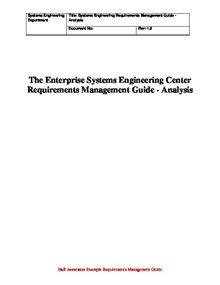Reliability, Availability, Maintainability and Testability Program Plan
 PDF
PDF
A formal Reliability, Availability, Maintainability and Testability (RAMT) Program Plan is essential for achieving high levels of reliability, testability, maintainability and the resulting system availability and is required to be developed during any Project system development phase (if the Project goes through that phase) and refined over all additional life-cycle phases the Project is contracted to accomplish. However, a RAMT Program Plan must be developed at any Project life cycle phase if required by contract or is necessary to successfully accomplish the Project work efforts. It specifies not only what the reliability systems engineer does, but also the tasks performed by other participants (engineers, reliability analyses, etc. Each Project Reliability Program process developed according to the Enterprise Plan is to be approved by Project Management and the Project Systems Engineer responsible for allocation of resources since resource determination for manpower and budgets for testing and other tasks is critical for a successful program and in general, the amount of work required for implementation of an effective reliability program for complex systems is large.
Download "RAMT Program Plan Example.pdf"
 PDF
PDF
 PDF
PDF
 PDF
PDF
 PDF
PDF
 PDF
PDF
 PDF
PDF
 PDF
PDF
 PDF
PDF